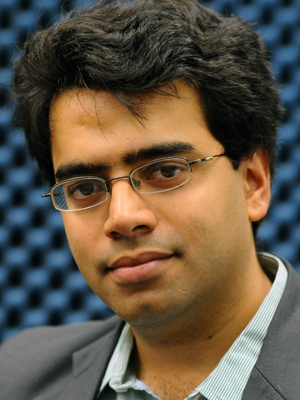MICL Seminar
Rethinking The Functional Boundaries of Integrated Radio-Frequency Systems Enables New Wireless Communication Paradigms
Add to Google Calendar

Mobile data traffic in 2014 was nearly 30 times the size of the entire global Internet in 2000. Next generation wireless networks are targeting 1000x increase in capacity to meet the insatiable demand for more data. Such a tremendous increase in wireless data will require a complete rethinking of today's wireless communication systems and networks from the physical layer to the network and application layer.
In this talk, I will focus on recent research in CoSMIC lab in this space. I will touch upon our work on energy-efficient and high-power millimeter-wave CMOS circuits that have drawn interest for next-generation 5G cellular communications. The bulk of this talk will focus on our work on enabling full-duplex wireless communication, where transmitters and receivers operate at the same frequency at the same time, thus potentially doubling data throughput, promoting more flexible spectrum usage, and enabling solutions to several network problems. The fundamental challenge in full duplex is the tremendous transmitter self-interference at the receiver, which can be one trillion times more powerful than the desired signal and must be dealt with in all domains. This powerful self-interference is susceptible to uncertainties of the wireless channel (for instance, frequency selectivity and time variance) and the imperfections of the transceiver electronics (nonlinear distortion and phase noise to name a few), making it even harder to deal with. I will discuss several generations of fully-integrated CMOS transceiver ICs with self-interference cancellation that leverage circuit design innovations to enable advanced yet robust signal processing such as noise cancellation, distortion cancellation and wireless channel equalization in the RF and electromagnetic (i.e. antenna) domains and achieve the challenging performance required. I will also briefly touch upon our collaborative work with network theorists to determine the rate gains that are possible under various full duplex scenarios based on realistic physical layer models that we developed. Finally, I will end this talk with a brief description of our ongoing and future work on other emerging wireless communication paradigms.
Harish Krishnaswamy received the B.Tech. degree in electrical engineering from the Indian Institute of Technology, Madras, India, in 2001, and the M.S. and Ph.D. degrees in electrical engineering from the University of Southern California (USC), Los Angeles, CA, USA, in 2003 and 2009, respectively. In 2009, he joined the Electrical Engineering Department, Columbia University, New York, NY, USA, where he is currently an Associate Professor.
His research interests broadly span integrated devices, circuits, and systems for a variety of RF and mmWave applications.
Dr. Krishnaswamy serves as a member of the Technical Program Committee (TPC) of several conferences, including the IEEE RFIC Symposium. He was the recipient of the IEEE International Solid-State Circuits Conference (ISSCC) Lewis Winner Award for Outstanding Paper in 2007, the Best Thesis in Experimental Research Award from the USC Viterbi School of Engineering in 2009, the Defense Advanced Research Projects Agency (DARPA) Young Faculty Award in 2011, and a 2014 IBM Faculty Award.
 MENU
MENU 
